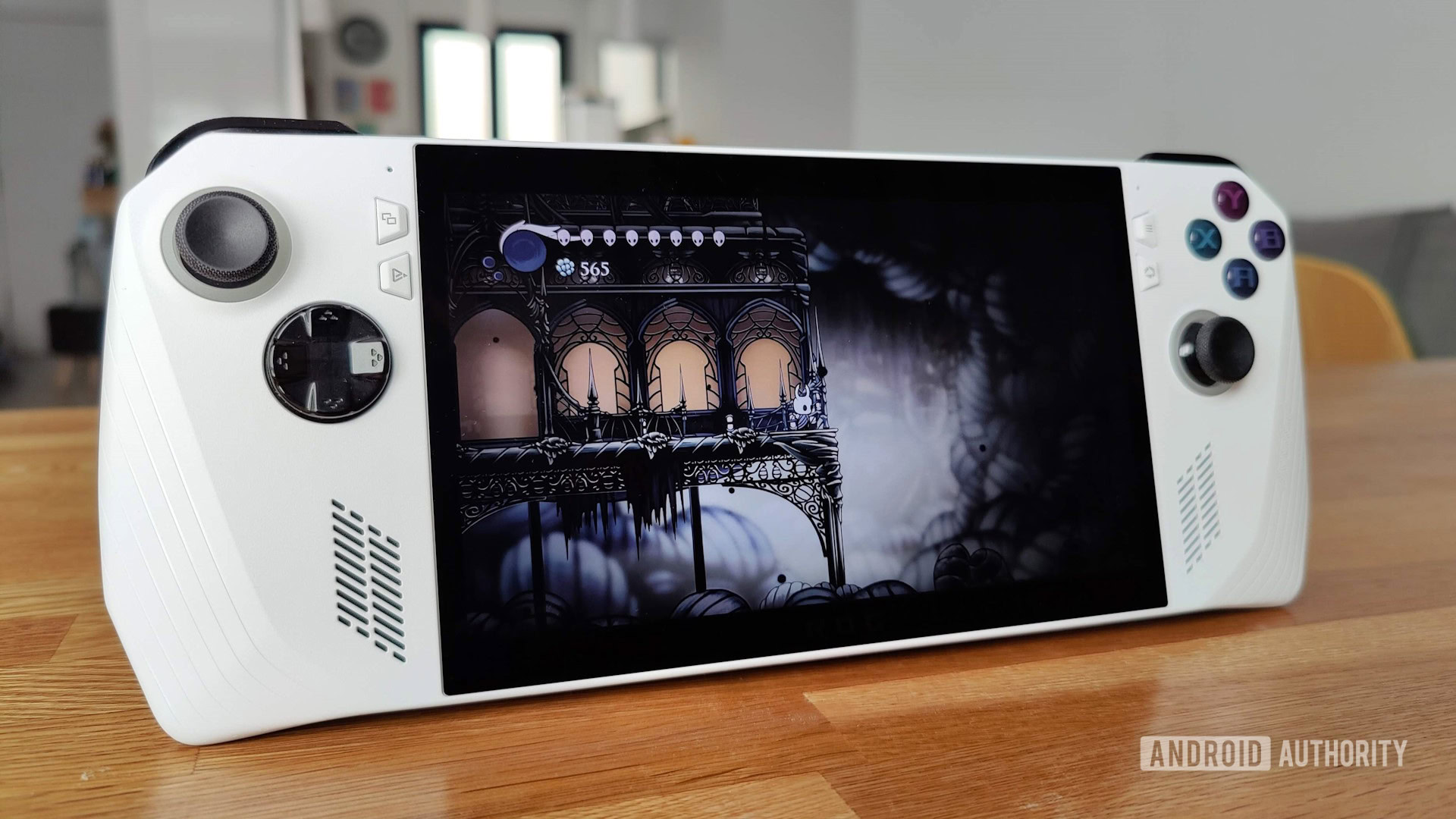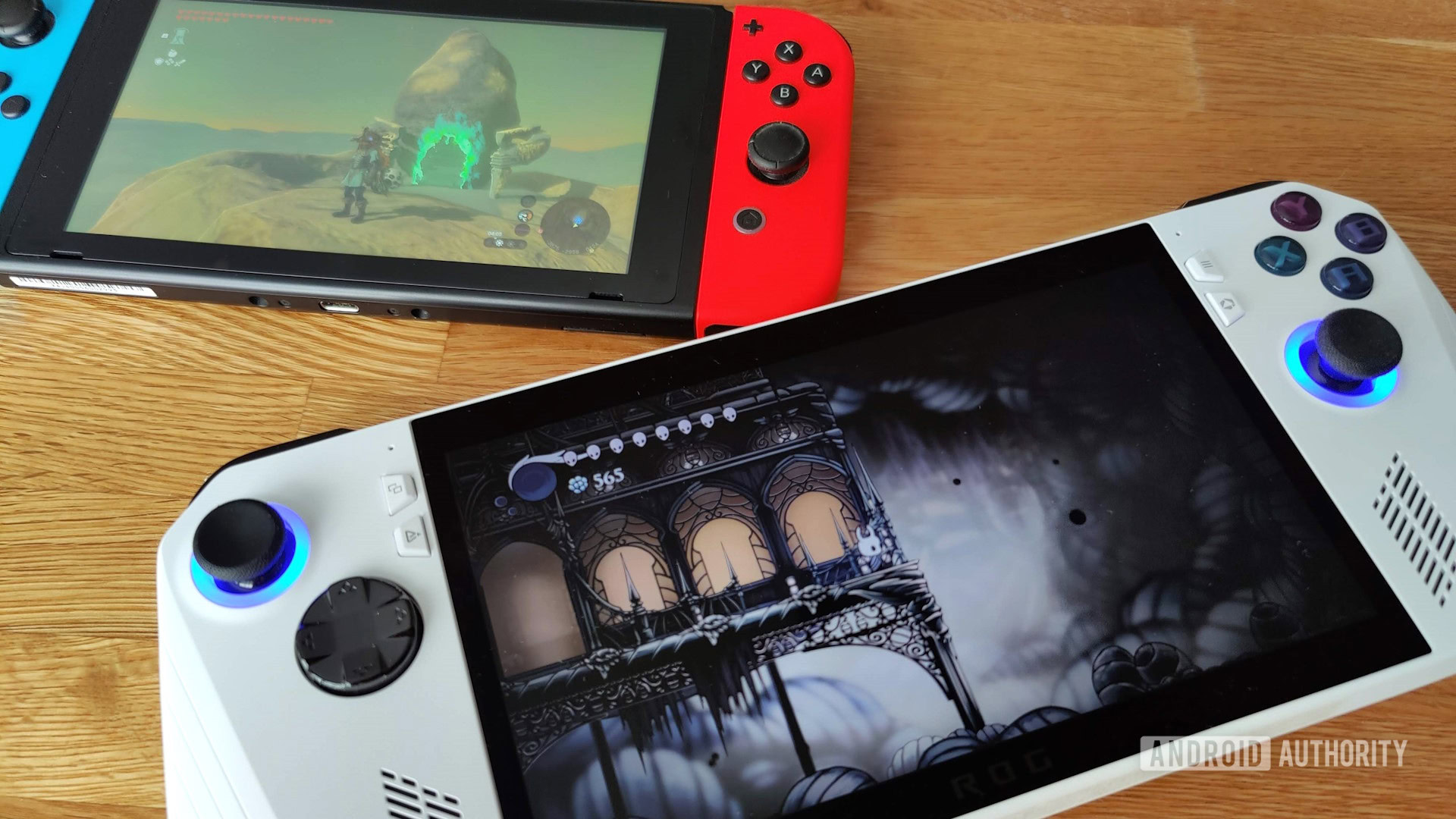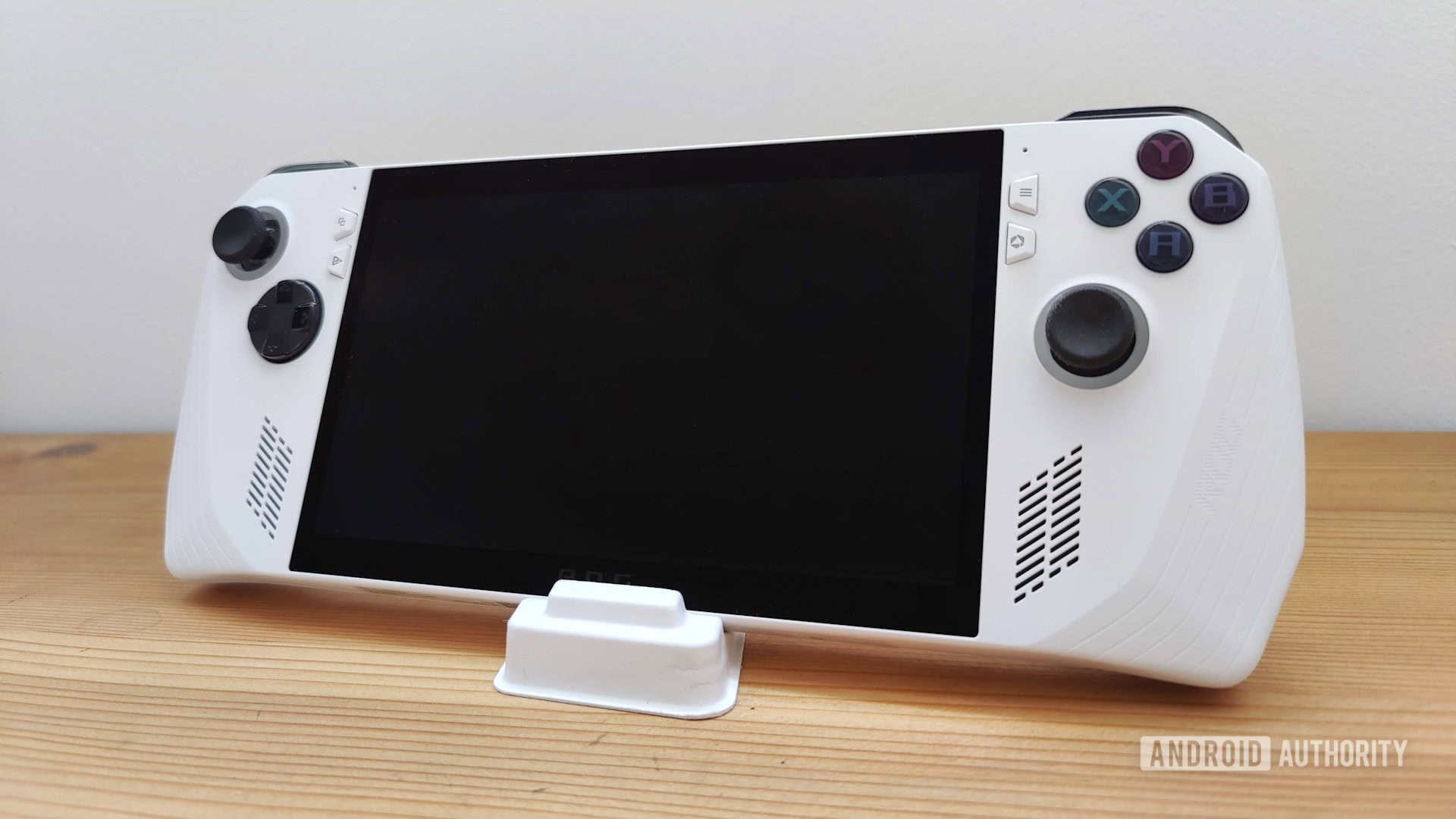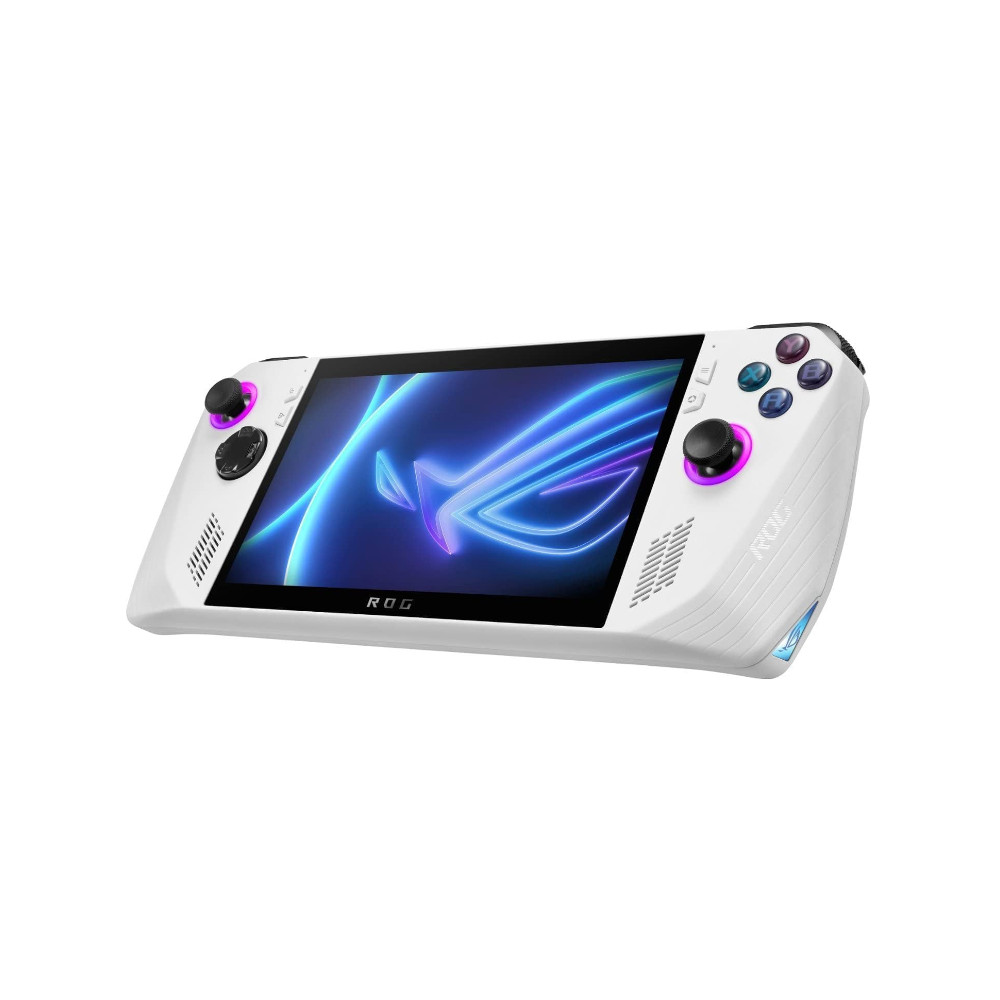Affiliate links on Android Authority may earn us a commission. Learn more.
I love my ASUS ROG Ally, but you shouldn't buy one (yet)
July 2, 2023

I didn’t need to buy an ASUS ROG Ally. I already have a desktop gaming PC that’s more than powerful enough for my needs, and my portable gaming needs are largely covered by the Nintendo Switch and a handful of mobile games. Heck, I don’t even plan on using it outside of the house.
But there’s something magical about laying down on the sofa after the kids have gone to bed and chiseling away at my bountiful backlog of PC games. It’s a luxury that for me is absolutely worth it, but I’d still hesitate to recommend the ROG Ally to anyone who’s on the fence. Let me explain why.
A gaming-first device
As someone who sits in front of a computer all day typing words for the insatiable internet content machine, the last thing I want to do at the end of a long day is sit in front of that very same computer in that very same office looking at that very same screen. My Xbox Series S is hooked up to the same monitor, causing it to collect dust for the same reason.
Buying the ROG Ally changed everything. Being able to leave behind work and pick up a device that’s exclusively for gaming truly helped me disconnect over these past two weeks with the device. After starting up, the ROG Ally launches directly into the Armoury Crate app, which is filled with my games. I can almost forget it’s Windows… almost.
The ASUS ROG Ally has transformed my gaming habits in a way I didn't expect.
At this point in my life, my gaming sessions are short and unpredictable, which handhelds really excel at. For example, I can clear a few floors of the Mines or catch some fish in Stardew Valley while my baby is strapped to my chest sleeping. He’d wake up if I sat down or stopped walking, but the button-mashing doesn’t seem to bother him.
At night, I can purge some minions of Nurgle in Warhammer 40,000: Chaos Gate – Daemonhunters on the sofa next to my wife while she watches some movie by Jim Jarmusch that I don’t have the emotional headspace to understand.
It’s a match made in heaven.
One ecosystem to rule them all

Retailing for nearly $700 (or more if you’re in Europe like me), the ASUS ROG Ally is a pricey bit of machinery. That’s twice the price of a Nintendo Switch, and several hundred dollars more than a lower-specced Steam Deck. It’s enough to buy a PS5 and a handful of games, even after the price hike.
But for me, just the thought of investing in a new ecosystem and buying even more games that I inevitably won’t have time to play is exhausting. Buying games for a console I already have like the Nintendo Switch is painful knowing that I still have hundreds of Koroks to hunt down in The Legend of Zelda: Tears of the Kingdom, and I haven’t even begun to dip my toes into Metroid Dread or Advance Wars 1+2: Re-Boot Camp.
The fact that the ROG Ally supports all PC marketplaces right out of the box is a game-changer.
With the ROG Ally, I can load up any Steam title I’ve ever purchased (not just Deck-verified games), any of the free games I’ve claimed over the years on the Epic Games Store, or a plethora of Xbox Game Pass games. The Ally comes with three months of Game Pass Ultimate, which for me was perfect timing since my three-year discounted subscription lapsed in May.
The other big win for the ROG Ally is emulation. There are plenty of emulation-focused handhelds out there, but they tend to target either the lower end of the market for retro games or the higher end of the market for handheld gaming PCs. The Ally is definitely in the second category, but it manages to hit a much more accessible price point — and it’s made by a major retailer. ASUS might not be perfect, but at least it won’t run off with your Kickstarter money while still letting you run demanding emulators like Dolphin and yuzu.
And in case you’re wondering, performance has been an absolute non-issue. The ROG Ally gets well over 100fps on the lowest power profile in low-lift titles like Hollow Knight and pushes a respectable 30-45fps in demanding titles like Everspace 2 on the highest power profiles. The latter will leave you searching for a charger in just over an hour, though. As for emulation, it can run Xbox 360, PS3, and even Nintendo Switch games with ease.
Why you should wait before buying the ASUS ROG Ally

Odds are if you’re reading this, you’ve either already purchased an ASUS ROG Ally and are looking for validation, or you’re thinking of buying one even though you absolutely do not need it. If you’re in the former group, I send you my sincerest nod of approval from one internet stranger to another. We’re in this together.
For everyone else, I’d recommend waiting at least a few months. Despite the hardware being top-notch, the software on the ASUS ROG Ally is still a bit of a mess. Launching a game from the flagship Armoury Crate app doesn’t minimize the window, often leaving you to wonder if the game is actually opening. And while performance is certainly great on most titles, it’s far from optimized.
It’s also worth pointing out that some of the jank is due to Windows, which is both a blessing and a curse when it comes to handhelds. Setup woes are exacerbated by the fidgety touchscreen keyboard, although I managed to get around this by connecting my Logitech MX Keys keyboard and MX Master 3S mouse. Still, the touchscreen keyboard pops up randomly when trying to launch a game, which is a minor annoyance but one worth noting.
Nearly all of my complaints with the ROG Ally can be fixed with software updates.
I have plenty of other little quibbles with the ROG Ally, too. The fingerprint scanner in the power button rarely works on the first try, audio is sometimes crackly on the lowest power profile, and worst of all, there’s a massive dead zone on the joysticks. This last one makes precise movements in first-person shooters and other competitive titles nearly impossible, although let’s be honest, you still won’t stand a chance against anyone with a mouse and keyboard.
At the end of the day though, these are all software issues. Sure, the ASUS ROG Ally will never have great battery life (check out Digital Foundry’s coverage for a deep dive into performance vs battery), but the rest is absolutely fixable, and for its part, ASUS has been very receptive to feedback from the community so far. I have no doubt that by the end of 2023, the Ally will be a much easier device to recommend, not to mention the fact that there will be a cheaper model on the shelves before the holidays.
For those reasons, you should hold off for a bit. But if you’re like me, and you can’t wait for a Nintendo Switch 2 for a new handheld gaming fix, I can’t blame you if don’t.

Thank you for being part of our community. Read our Comment Policy before posting.